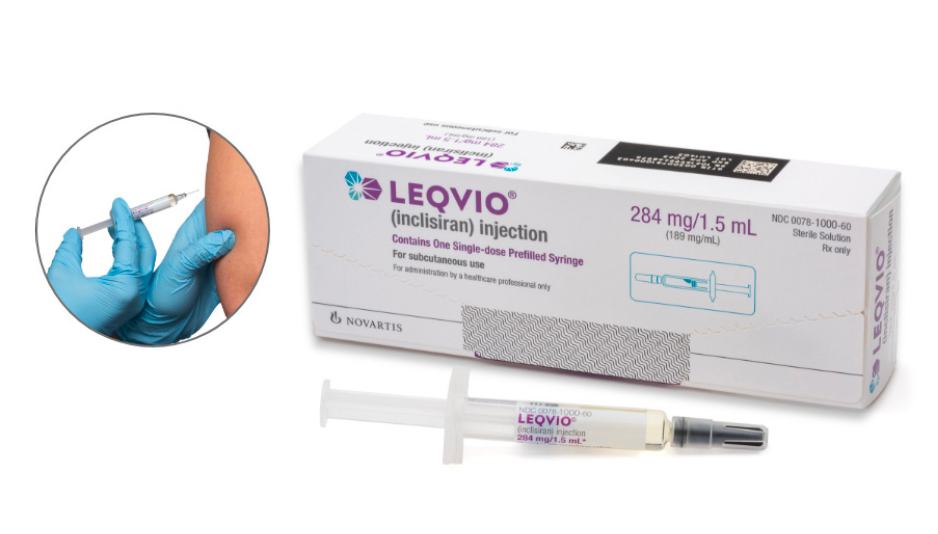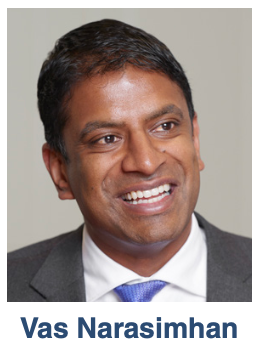- Sustainability
- DE&I
- Pandemic
- Finance
- Legal
- Technology
- Regulatory
- Global
- Pricing
- Strategy
- R&D/Clinical Trials
- Opinion
- Executive Roundtable
- Sales & Marketing
- Executive Profiles
- Leadership
- Market Access
- Patient Engagement
- Supply Chain
- Industry Trends
LDL Game Changer: Leqvio
More favorable administration, reimbursement could separate latest PCSK9 entrant.

In a cardiovascular portfolio of two, Novartis has had similar post-launch trajectories with Entresto (2015) and this year with Leqvio. Both are first-in-class (Entresto an angiotensin receptor blocker/neutral endopeptidase inhibitor; Leqvio, a first-in-class siRNA); with both having less-than-predicted sales out of the gate. But this time, Novartis CEO Vas Narasimhan has Entresto’s eight-year continued success story (the drug generated $3.5 billion in sales in 2021) and a Leqvio ramp up that is going significantly faster than its predecessor to showcase. Leqvio is indicated for the treatment of low-density lipoprotein (LDL) cholesterol, along with diet and maximally tolerated statin therapy for adults with heterozygous familial hypercholesterolemia (HeFH) or clinical atherosclerotic cardiovascular disease (ASCVD). It’s administered in two injections per year, after initial subcutaneous administration, all by a healthcare professional.
Narasimhan indicated on a late July Q2 earnings call that, in the US, Leqvio has enjoyed a steady ramp-up so far this year. The key groundwork for the drug’s access is closely tied to affordability, acceptance, and advertising, in addition to a unique and potentially duplicative model for chronic disease patient management.
The PCSK9 gene that controls the protein that regulates the amount of cholesterol in the bloodstream is the target of these latest drugs in the category. While Leqvio degrades the mRNA molecules used to translate genetic instructions into proteins, two other marketed drugs, Sanofi/Regeneron’s Repatha and Amgen’s Praluent, are monoclonal antibodies that target PCSK9 activity. Both are self-injected twice a month.
In contrast, the administration benefit of two injections per year is one of the reasons analysts believe that Leqvio can surpass sales of Repatha and Praluent. According to GlobalData’s Pharma Intelligence Center, Leqvio will reach $2.5 billion in sales by 2027, while Repatha and Praluent will reach $2.2 billion and $716 million, respectively. Leqvio, approved in the US in December 2021, has posted $36 million in sales for the first half of 2022.
And while the current price of Leqvio—$3,250 per dose in the US, translating to a first-year treatment of $9,750 (initial shot and two more) and then $6,500 for the subsequent years, which is slightly higher than Repatha and Praluent—some believe that the absence of a long safety record for Leqvio could be its only drawback.
Because the reimbursement of Leqvio is routed through the medical benefit pathway, the majority of Leqvio-eligible patients will have no copays. Regarding the affordability aspect, Narasimhan confirmed on the earnings call that two-thirds of patients have zero copay for Leqvio, including Medicare Part B patients with supplemental insurance, which is a boost for uptake and adherence.
Acceptance
As hinted to late last year, before the drug was approved in December, Novartis was planning an unconventional launch that targets large health systems. In this recent interview with Pharm Exec, Marie-France Tschudin, Novartis’ president, innovative medicines international, and chief commercial officer, described actively working with 200 US health systems that represent about 65% of the ASCVD patient and prescription volume within US healthcare systems.
The goal, then, is to help patients that aren’t currently controlling their cholesterol with existing statins or PCSK9 inhibitors, to be prescribed Leqvio in an effort to prevent exacerbated costs, and deaths, caused by uncontrolled cholesterol and downstream cardiac events.
Novartis is awaiting the results from the ongoing cardiovascular outcomes ORION-4 study, to associate inclisarin’s ability to lower cholesterol levels to improved cardiovascular outcomes. The primary completion date of the study is estimated for July 2026. However, the uptake for Leqvio and the launch groundwork is progressing.
On the call, Narasimhan said that the Leqvio’s current uptake is strongest with mid-to-large-sized group cardiology practices, which run buy-and-bill and make their own decisions on treating cholesterol. Large-volume cardiologists and smaller practices that are leveraging alternative injection centers are also seeing solid uptake. Now the company is moving its efforts on to larger medical centers and hospitals, working with their pharmacy and pharmacy and therapeutics (P&T) committees, as well as smaller cardiology offices. It has increased the number of unique locations ordering Leqvio to over 700, and 55% of customers placing repeat orders.

Another challenge, one that Narasimhan characterized as “normal things for a US healthcare launch in cardiovascular,” is physicians’ understanding around the various reimbursement hurdles for each patient. Specifically, the process of routing through the medical benefit pathway, so confusions that exist will clear up as physicians gain more experience. Narasimhan said that they are hearing from practitioners that when patients receive the medication, they see a significant LDL level drop in the next visit, which is a “winning proposition.”
To improve the odds of acceptance and uptake on the consumer side, advertising is targeting the 55-and-older crowd to reach the approximately 16 million Americans not at the recommended LDL-C target level, including those who have experienced a heart attack or stroke, a very large untapped market. In line with tapping that demographic, the first TV ad for Leqvio appeared during this year’s Oscars telecast in March. The “Never Give Up” campaign began running regularly in prime time shortly after as part of the multi-channel effort.
Leqvio also has a unique ex-US launch story. The drug was approved in Europe in December 2020, but has been dealing with COVID-19-related issues since its launch there. However, over 70% of the UK’s primary healthcare units have Leqvio on formulary. Novartis also enabled the NHS emergency health record (EHR) to identify potential Leqvio patients, again to affect overall healthcare costs.
According to the company’s July call, a large-scale education campaign has been launched in the UK; strong uptake of the drug is occurring in Germany; large-scale agreements have been established with some Middle East governments; plans are moving forward in Japan; and Novartis is currently finalizing a China filing of Leqvio.
Cardiovascular disease is not an easy launch space, said Narasimhan, but with a runway that goes to the late 2030s, at the very least, he believes there is significant opportunity to make Leqvio a very significant medicine.
Read the profiles of all 2022 product launch selections here.
Lisa Henderson is Pharm Exec's Group Editorial Director. She can be reached at lhenderson@mjhlifesciences.com.

Cell and Gene Therapy Check-in 2024
January 18th 2024Fran Gregory, VP of Emerging Therapies, Cardinal Health discusses her career, how both CAR-T therapies and personalization have been gaining momentum and what kind of progress we expect to see from them, some of the biggest hurdles facing their section of the industry, the importance of patient advocacy and so much more.
